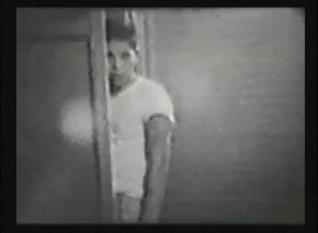
For "The Young and Evil," the latest in tank.tv's ambitious program of guest-curated exhibitions, Stuart Comer considers the "historical contours and shifting relationships of sex and community in the digital age." Comer contends that the Internet has increasingly eclipsed the cinema as the preeminent cultural screen, and consequently divides his exhibition between the venues. Invited guests, including Andrea Geyer, Carlos Motta and Daria Martin, have each selected one contemporary work, for exhibition on tank.tv, and one historical film to be screened in Tate Modern's cinema on September 20th, 2008. But if the separation of venues emphasizes the historical division between works, the exhibition's focus on social deviance and erotics provides a compelling, unifying thread. The most notable of the works currently up on tank.tv play into what Comer describes as the Internet's state of being an "uncanny hybrid of personal longing and collective interaction." Mansfield 1962 (2006), for example, appropriates a Highway Safety Foundation video William E. Jones found on the Internet, which uses 1962 police footage of gay sex in a public restroom to instruct officers about covert recording techniques. Jones has edited the footage to concentrate on discreet moments of sexual pleasure and, at the video's end, the mug shots of participants, who all went on to serve time on charges of sodomy. For The Shape of a Right Statement I (2008), Wu Ingrid Tsang performs one section of autism rights activist Amanda Baggs' forceful address, In My Language, which she published on YouTube in 2007. Tsang's strong, androgynous features and affected computerspeak (true to In My Language) complicate the original work's register of alterity. "The thinking of people like me is only taken seriously if we learn your language," he recites, at one moment, an assertion that rings true for many situated along the margins of society. - Tyler Coburn
Image: William E. Jones, Mansfield 1962, 2006

